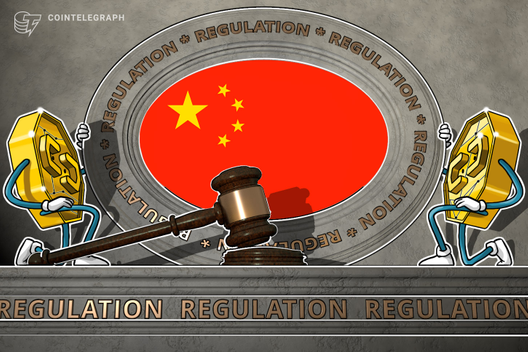Blockchain fail-safes in space: SpaceChain, Blockstream and Cryptosat
In the 1988 “Crypto Anarchist Manifesto,” engineer, author and cypherpunk Timothy C. May predicted a social and economic revolution enabled by technological developments, including high-speed networks, personal computers and satellites. Today, former Bitcoin core developer Jeff Garzik — now with SpaceChain — and others are making this vision a reality. Private crypto companies including SpaceChain, Blockstream, Cryptosat and others are rapidly launching satellites into orbit to offer blockchain validation, multisignature wallets and verifiable time-delay functions from space.
As the cryptocurrency market continues its overall moonward trajectory, the stakes are getting higher for blockchain protocols. Blockchains must not only maintain their security in the technical sense but they need to be able to withstand regulatory setbacks as well. If governments are a potential threat to the visions of unstoppable, decentralized networks on Earth, then putting blockchain validator nodes in space is a “backup.”
Garzik, the co-founder and chief technology officer of SpaceChain, argues that placing nodes out of human reach, in space, “can help address security and vulnerability issues facing centralized land-based servers on Earth, and unfurl new and exciting opportunities for other commercial use cases.”
This means that even if nodes fail, or are compromised or shut down — or even if the internet is somehow turned off — a verifiable copy of the blockchain will persist in space, adding to the “immutability” and censorship-resistant attributes of this technology. Now, “Space is for everyone,” states Garzik.
More companies are finding cheaper ways to provide blockchain-oriented “space-as-a-service.” Nominally, San Francisco-based company Cryptosat is “interested in using the properties of space, to benefit blockchain,” the co-founders tell Magazine. They are leveraging premade components to launch miniature, coffee mug-sized “cubesats” and simple on-ground infrastructure deployed on enterprise cloud-web providers for an end-to-end system where anyone can assemble, launch and communicate with a satellite providing blockchain nodes in space.
Space infrastructure is offering whole new possibilities for composable, decentralized infrastructure. SpaceChain and Cryptosat are investigating a range of use cases in addition to nodes, including randomness beacons and “verifiable delay functions” (VDFs). Randomness beacons provide trusted sources of entropy and are a fundamental component for generating an unpredictable result.
In cryptography, for example, the initial trusted setup of key pairs requires a source of randomness. VDFs execute functions after a certain amount of time has passed, for transactions or smart contract functions. With satellites, these cryptographically signed timestamps can be determined by orbits around the Earth and transmitted from space. “It’s basically like a trusted clock in space,” Gil Shotan, co-founder of Cryptosat, tells Magazine. These interact with software interfaces for enterprise clients, such as digital asset management company Nexus Inc. and cryptocurrency exchange Biteeu, for secure in-orbit multisignature transactions.
While SpaceChain and Cryptosat are blockchain-agnostic integrators for space services, Blockstream, which was co-founded by Adam Back — one of the original cypherpunks and the inventor of “Hashcash,” a proof-of-work precursor mentioned in the Bitcoin white paper — is specifically focused on using space to expand the capabilities of the Bitcoin network.
The Blockstream Satellite network broadcasts the Bitcoin blockchain around the world, 24/7, to provide connectivity for continual access to the Bitcoin network to mitigate the threat of network interruptions or IP traceability. Anyone can purchase a small satellite antenna and USB receiver to view these blocks to ensure their node is in sync.
How do you get “to space”?
Getting your node into space is not as difficult as one might think.
The United States National Aeronautics and Space Administration, known by most simply as NASA, reserves spots for commercial launches on each mission. Based on a proposal that emphasized the security use case for blockchains, SpaceChain, which was founded in 2017, was the first blockchain company to launch with NASA.
With the goal to provide “open and neutral” space infrastructure, SpaceChain launched its first payload (cargo) carrying a node to the International Space Station in 2019. Its fourth node, an Ethereum validator, was launched from NASA’s Kennedy Space Center aboard a SpaceX Falcon 9 rocket in 2021. This allows an immutable record of blockchain transactions to be not only global but universal, to further the functionality of decentralized applications in space.
While one might think that the ISS or a satellite is quite the target for attack by anyone that really doesn’t like blockchains, SpaceChain is convinced of the opposite.
“As long as it doesn’t get killed, it will bounce back,” states Zee Zheng, co-founder and CEO of SpaceChain. Space infrastructure offers enhanced security properties, as it is freely and continually monitored by every space agency in the stratosphere. While this still doesn’t solve the intractable problem of trust in hardware support chains, if tampered with once launched, everyone will know. In fact, governments are quite interested in supporting blockchains in space.
Who pays in space?
Putting blockchains in space is often positioned as an ideological pursuit for decentralization, away from the reach of untrusted intermediaries. Yet, space infrastructure is a highly sought after, often publicly funded and privately provided service. The commercial case for space is quite compelling.
SpaceChain secured approximately $60,000 in funding from the European Space Agency for its first payload, and more recently it received 440,000 British pounds ($605,000) in funding from Enterprise Singapore and Innovate UK to develop “Decentralized Satellite Infrastructure” (DSI), a real-time blockchain-operated network of satellites.
For some like SpaceChain’s Garzik, “Space is not about the dollars,” as decentralized currencies surpass the need for terrestrial money. For others like Cryptosat and Loft Orbital, money is a factor. Loft Orbital shuttles payloads for companies, including the recent Ethereum node for SpaceChain, and raised $13 million in a Series A funding round in 2019. “There is still money to be made on earth,” Yonatan Winetraub, co-founder of Cryptosat, tells Magazine.
Governance and politics in space
Governance in space could go in several directions. Space is known as an arena for geopolitical competition, enhanced by an entanglement of interests between state and private actors.
SpaceChain’s network of low Earth orbit satellites, known as a “constellation,” is operated by multiple parties in multiple jurisdictions. It is set to offer a collaborative model where infrastructure is non-territorial and accessible to commercial and government users. While SpaceChain hopes that its infrastructure mediates a collaborative model between numerous countries and commercial entities, attempting to establish resilient, decentralized networks can also create new vulnerabilities.
Commercial interests, mixed with competing players, may result in new rivalries, not least of which includes Elon Musk’s plan to put “literal Dogecoin on the literal moon.” In June, Musk declared that “a new space race has begun!” via Twitter, in response to crypto exchange Bitmex, which vowed to beat Dogecoin to the moon with Bitcoin.
Garzik thanked Musk and SpaceX on Twitter but pointed out that SpaceChain “has ALREADY ridden your rockets to space,” adding that SpaceChain “is an integrator, and happily accepts BTC ETH SPC and now DOGE” for customer space missions.
Perhaps the next decentralized autonomous organization, or DAO, will be in outer space?
According to some, the future could involve the multispecies population of multiplanetary systems, with multiple digital currencies. Whether blockchain capabilities enhance space or space enhances blockchain here on earth, “Space is closer to us than you think,” Winetraub tells Magazine.









